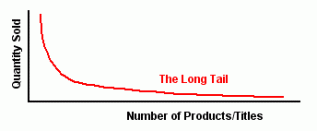The internet of things (iot) refers to the ‘connectivity of physical objects to the network,’ (Mitew, 2014). This connection can enhance our lives by processing and recording information: tracking health and fitness, reducing and managing energy consumption and improving safety standards on roads. These devices communicate with the user and each other within the network (Bleeker, 2006). It is estimate that (iot) will generate over $7.1 trillion annually by 2020, a decline from previous estimates of over $8 trillion (SiliconBeat, 2014).
The accumulated data from these devices is susceptible to surveillance and misuse, resulting in adverse consequences to the individual such as the publication of private information (health records, personal interactions, economic history). In a previous blog post, ‘Rolling in the Deep, Dark Internet,’ I discussed how the internet is designed to remember and the monitoring of user’s online activity by criminal, military, government forces. Powles (2014) argues that ‘the new hyperconnected world will only make things worse for privacy,’ as our physical interactions and objects are exchanged through connections to digital networks. It is the sensors and location services embedded within this technology that poses a significant risk to user’s privacy (Mitew, 2014).
The nude photo hacking scandal has highlighted the implications of digital interactions and the extent of user’s privacy. Pre-internet, the publication of offline photographs would require physical possession and a willing distributor (legacy media: television, magazines). It is through the internet and mobile technology that these images were produced, accessible and globally distributed (Grubb, 2014). This scandal has sparked an important debate about the importance of privacy and the connection of tangible objects (or formerly tangible) to the abstract.

Stop Google Glass? How the physical connection can incite debates about online privacy (CNN)
Powles (2014) suggests that the tangibility and physical appearance of a connection may make ‘issues of privacy more readily apparent to users.’ Google glass is an example of the (iot) generating discussion about privacy, with a poll revealing 72% of Americans refusing to purchase the device based on privacy concerns (Mashable, 2014). This discussion about the product’s privacy implications has led to the banning of Google Glass at places such as movie theatres, restaurants and Guantanamo Bay (Huffington Post, 2014). Though the reliability of the polling is problematic, the bans illustrate how physical connections through wearable devices can evoke an important debate over privacy.
The internet of things (iot) can enhance our daily lives and may have implications for the covert snapchat and private selfie. Though there are concerns about the misuse of accumulated data; will our increasing interaction with tangible, connected devices lead to enlightened discussion about user’s privacy and data use?
Source
Bleecker, J (2006), ‘Why Things Matter: A Manifesto for networked objects.’
Grubb, B 2014, ‘iCloud celebrity photo hack: texts, address books and more ‘also accessible,’ SMH, 3 September.
Joseph, D 2014, ‘Apple Watch will power the internet of things,’ The Guardian, 16 September.
Singh, J and Powles, J 2014, ‘The internet of things – the next big challenge to our privacy,’ The Guardian, 28 July.








